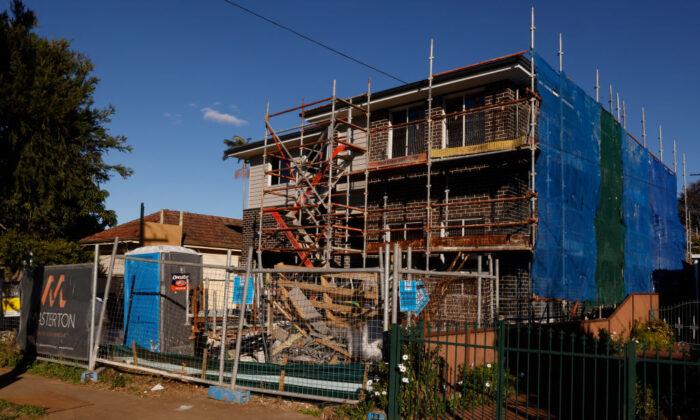Overseas migration drove the population in Australia to reach 26.5 million in the fiscal year to March 31, according to the Australian Bureau of Statistics (ABS).
The statistics bureau said that the total population in Australia increased 2.2 percent from the previous fiscal year. A 103 percent annual surge in arrivals from overseas to 681,000 was recorded after pandemic-related border restrictions were lifted in February 2022, while overseas migrant departures rose 8.8 percent to 226,600.
“This pattern, low departures in particular, is a catch-up effect after closed international borders, as international students return with only a small number departing because very few arrived during the pandemic,” the ABS said.
“This effect is expected to be temporary as the number of departures will increase in the future as temporary students start departing in usual numbers.”
Western Australia saw the highest population increase of 2.8 percent, followed by Victoria at 2.4 percent and Queensland at 2.3 percent. The Australian Capital Territory witnessed a 2 percent population growth, while New South Wales’ population rose 1.9 percent. South Australia, Northern Territory, and Tasmania recorded population growth of 1.6 percent, 0.9 percent, and 0.4 percent, respectively.
Net overseas migration accounted for 81 percent of the growth in population, adding 454,000 people during the 12 months to March 31.
Decreasing Birth Rate
Births in the country declined 3.4 percent and deaths increased 7.9 percent, with COVID-19 as a large contributor to the increased death cases.Shane Oliver, AMP’s Chief Economist, said that while migration continues to grow, which helps boost measured GDP growth, it is also worsening the housing crisis in the country.
“Permanent and long term arrival data up to July suggest that the surge in immigration is continuing to accelerate and we are on track for net immigration of 500,000 or more in the last financial year which would take population growth to 2.5 percent, its fastest since 1966,” Mr. Oliver said.
“Some of this is catch up after the pandemic slump and it will help boost measured GDP growth and immigration makes for a more dynamic economy so there are benefits. But what really counts for living standards is per capita GDP (and its going backwards) and the surge in immigration is making the housing shortage even worse.”
Earlier, Mr. Oliver said that the Australian government must adjust immigration in Australia in line with property supply as real estate prices keep soaring.
“That’s the real issue here. We pump people into the economy, and then we all go, ‘Surprise, surprise, house prices are expensive. We got housing affordability problem.’ Of course, we’re gonna have that problem,” he said.
“So I think we do need to calibrate those immigration levels to the ability of the property market to supply new property and to allow each year for that cumulative undersupply to be whittled away.”
Meanwhile, the Liberal party criticised the Albanese government’s insufficient efforts to address the property and rental crisis in Australia while opening its doors to more migrants.
“The population of the Sunshine Coast has arrived under Labor but there’s no plan for where they will live, or how to deal with the impact on government services or the environment,” Shadow Minister for Immigration and Citizenship Dan Tehan said.
“This at a time Australians are either struggling to find a place to live or they’re being hit with crippling rent increases.”






